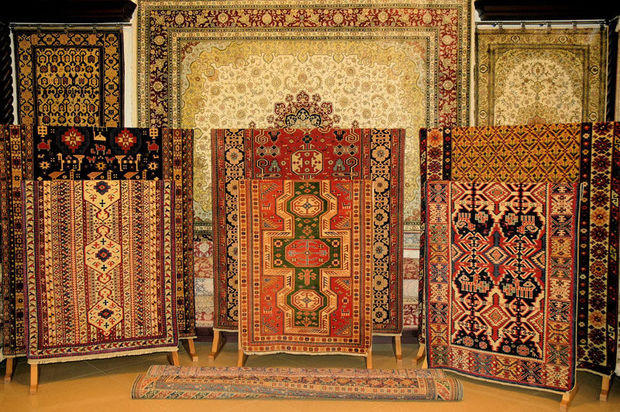Carpet weaving art highlighted in Guba

By Laman Ismayilova
"Carpet World Association" Public Union has organized trainings on promotion of carpet weaving art and protection of cultural and material heritage.
The project won the competition announced by the Council on State Support to Non-Governmental Organizations and the Azerbaijan Ministry of Culture, Azertag reported.
The main goals of the the project to be implemented in Guba region is to support the restoration, protection and development of Azerbaijani carpet weaving traditions, promotion of this art form as a source of economic income.
The initiative also aims at increasing the potential of carpet weaving in remote areas and to train qualified personnel in the field of carpet weaving.
The trainings offer all partcipants to earn a living by owning a profession, as well as mastering this art form.
The project consists of practical and theoretical parts and envisages the participation of 10 women living in Guba region, who have a great interest in carpet-weaving art.
Unique Azerbaijani carpets are well-known all over the world for their quality and high artistic value. Besides, amazing and fantastic carpets of Azerbaijan represent a real mystery, leading one inside the fairy tales full of majestic feelings.
The Land of Fire has seven carpet producing regions including Baku, Shirvan, Guba, Tabriz, Karabakh, Ganja and Gazakh and each of them has its own technology, typical patterns and colors.
According to their technical aspects, Azerbaijani carpets are classified as flat-woven (pileless) and knotted (pile). The flat-woven carpets are linked to the earlier period of carpet weaving. There are several kinds of pileless carpets such as Shadda, Verni, Jejim, Zilli, Sumakh, Kilim and Palas.
Shadda is a flat weave carpet, made primarily in Nakhchivan, Agdam, Gubadly, Agjabedi. The artistic composition of shadda made by complicated whipping, as well as its constituents have a complex form.
One of the most widely spread type of the flat-weave carpet is "verni". The key pattern of "verni" is the S-element. Its shape varies, it may resemble both figure 5 and letter S. This element means "dragon" among the nomads and “water” among the village people. According to the ancient believes, a dragon featuring carpet would protect the family from foul weather. Agjabedi, Barda, Aghdam, Nakhchivan are the centers of this type of pileless carpets.
Jejims are woven on simple horizontal looms by narrow stripes 30–35 cm wide and 15–10 cm long. The resulting product is a cloth to be used as a wall carpet, a bedding coverlet, or curtains.
The major jejim production centers are Barda, Nakhchivan, Zangilan, Shusha, Shamakha.
Zilli carpet is characterized by stylized forms of animals and vegetal elements. In terms of their composition and pattern the Azerbaijani zillis are very diverse. They feature the images of large elements in the shape of big lozenges, paired horns, various stylized elements.
The Sumakh carpets have become widely spread and recognized over the last few centuries. Since the 18th century, they have been made in country's Guba and Gusar regions.
The Sumakh carpets feature the diverse stylized vegetal motifs, various geometrical elements such as large hexahedral, square, rhomboid medallions.
Kilim is the most widespread type of flat-woven carpets. They are made by passing the weft through the warp using the technique of compound interweaving. Kilim is characterized by a slot-like gap (opening) around the geometrical patterns.
The technique of kilim weaving predetermines the pattern shapes in the form of a lozenge, triangle, and trapezium. Images of animals, birds and humans are geometrized in kilims. Kilims of different regions are distinguished by their composition, pattern, and colors. In terms of their technical peculiarities kilims can be classified into five major groups based on the area of production: Kazakh, Karabakh, Absheron, Shirvan and Tabriz kilims.
Palas is one of the widely spread flat-weave carpets. The palas weaving process consists in passing the weft through the warp by a simple technique. The weavers decorate the palas by traditional patterns in the form of horizontal stripes commonly used throughout Azerbaijan. As a rule, the palas is not framed by a border.
---
Laman Ismayilova is AzerNews’ staff journalist, follow her on Twitter: @Lam_Ismayilova
Follow us on Twitter @AzerNewsAzHere we are to serve you with news right now. It does not cost much, but worth your attention.
Choose to support open, independent, quality journalism and subscribe on a monthly basis.
By subscribing to our online newspaper, you can have full digital access to all news, analysis, and much more.
You can also follow AzerNEWS on Twitter @AzerNewsAz or Facebook @AzerNewsNewspaper
Thank you!
